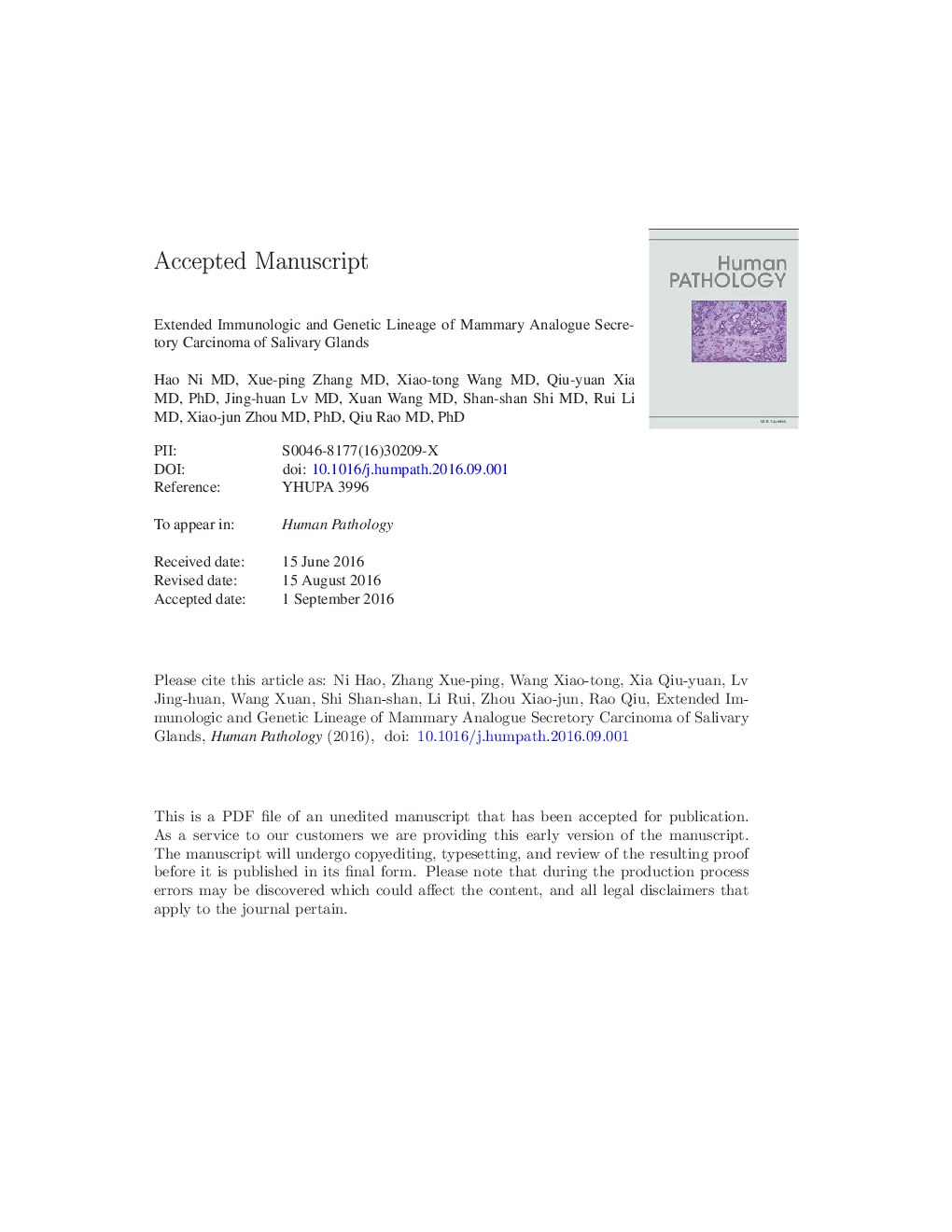| Article ID | Journal | Published Year | Pages | File Type |
|---|---|---|---|---|
| 8807819 | Human Pathology | 2016 | 24 Pages |
Abstract
Mammary analogue secretory carcinoma (MASC) of salivary glands is a newly recognized tumor entity. To explore a more practical and convenient immunohistochemical approach to distinguish MASC from other tumors arising from salivary glands as well as to expand the immunologic and genetic lineage of MASC, we examined 17 MASCs using clinicopathologic, immunohistochemical, and molecular analyses. Eighteen cases of acinic cell carcinoma, 18 cases of adenoid cystic carcinoma, 22 cases of mucoepidermoid carcinoma, and 14 cases of basal cell adenocarcinoma were brought in for comparison. Seventeen MASCs shared similar architectures with not only intraluminal or intracellular secretion but also low-grade vesicular nuclei. In addition, they were all immunoreactive for S-100 and SOX-10, whereas only 3 of 17 demonstrated reactivity for GATA-3 and P63, and 4 of 17 were focally positive for CD117. ETV6 translocation was detected in 10 cases by fluorescence in situ hybridization, whereas intact ETV6 was noted in 2 cases. Our data proposed a combined immunohistochemical panel to distinguish MASC from other tumors arising from salivary glands and expanded the immunologic and genetic lineage of MASC.
Keywords
Related Topics
Health Sciences
Medicine and Dentistry
Pathology and Medical Technology
Authors
Hao MD, Xue-ping MD, Xiao-tong MD, Qiu-yuan MD, PhD, Jing-huan MD, Xuan MD, Shan-shan MD, Rui MD, Xiao-jun MD, PhD, Qiu MD, PhD,
